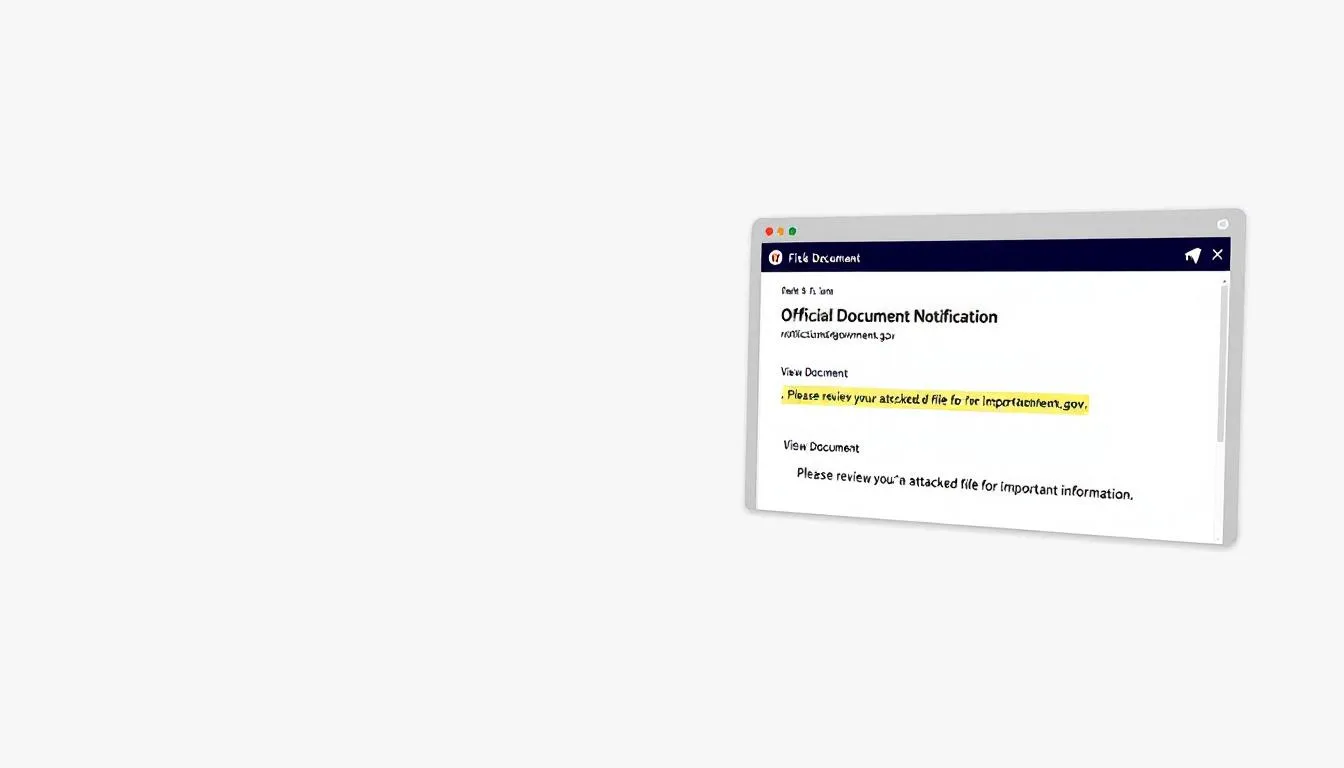

Before you sign on the dotted line for your next property purchase, there’s one document that could save you thousands of dollars and countless headaches. A land information memorandum (LIM) report serves as your window into everything the local council knows about a property, from building consents to natural hazards that could affect your investment.
Whether you’re a first-time buyer navigating the property market or an experienced developer evaluating your next project, understanding how to get a lim and interpret its contents is essential for making informed decisions. This comprehensive guide will walk you through everything you need to know about LIM reports, from what information they contain to how you can use them to protect your interests.
In New Zealand’s complex property landscape, a land information memorandum lim provides crucial insights that aren’t available elsewhere. With 83% of home buyers considering LIM review essential to their purchase process, this official document has become an indispensable tool for due diligence.
A Land Information Memorandum (LIM) report is an official document provided by local councils that summarizes all property information the council holds about a specific piece of land or buildings. Unlike general property summaries, this comprehensive report represents a legally recognized document that councils prepare on-demand, reflecting their current records as of the report date.
The council holds this information across various departments, from building consents to resource consents, making the LIM a centralized source of regulatory knowledge. When you apply for a lim, you’re requesting access to this consolidated database of local government official information that could significantly impact your property decisions.
A LIM report fundamentally differs from a property file in several key ways. While a property file contains the underlying documentation submitted to councils since development began—original plans, applications, and correspondence—the LIM provides a current summary of what the statutory organisation knows today.
This distinction matters because the property files contain historical detail, but the LIM offers an up-to-date snapshot of conditions attached to the property, notices orders or requisitions affecting your investment, and other relevant information that impacts current ownership.
The primary purpose of any lim request centers on protecting informed decision-making during property transactions. Whether you’re buying, selling, or developing, the report helps verify the legality and safety of improvements, assess compliance status, and evaluate potential risks that could affect property value or intended use.
Banks frequently require a current LIM as part of lending conditions, making it essential for mortgage approval. The network utility operator connections, sewerage drains rates information, and natural hazard information contained within can influence both insurance availability and property valuations.
Understanding what councils include in LIM reports helps you maximize the value of this comprehensive report. The scope varies by council, but most cover several critical categories that affect property ownership and development potential.
Every building consent issued for construction, modification, renovation, or demolition appears in the LIM. This section reveals whether associated inspections were completed and if work complies with the building act requirements. The information provided includes dates, consent numbers, and compliance status.
For properties with multiple building permit applications over time, this historical record helps trace development patterns and identify any unconsented modifications that might require attention.
The report details all council-issued resource consents, including permissions for specific land uses, subdivisions, or variations to district plan requirements. These consents often include conditions attached that may restrict future development or require ongoing compliance measures.
Resource consents particularly matter for commercial properties or those in sensitive environmental areas where special restrictions might apply.
LIM reports classify land according to district plan designations—residential, commercial, mixed-use, or rural zones. The document also identifies overlays such as heritage areas, flood zones, or special character designations that could limit development options.
Understanding how councils other classifications affect your property helps evaluate development potential and compliance requirements for any proposed changes.

One of the most critical sections covers any notices orders or requisitions affecting the land, including enforcement actions for unconsented work, dangerous building notices, or environmental violations. These requisitions affecting your property could materially impact value and require resolution before settlement.
The LIM flags both current and historical compliance issues, giving you insight into ongoing council relationships and potential liability areas.
Current council capital value (CV), land value (LV), and annual rates appear in every LIM. The report also shows any rates owing or payment arrangements that could transfer to new owners.
This financial information proves crucial for budgeting ongoing ownership costs and understanding the property’s official valuation context.
Under the Resource Management Act, councils must include all known natural hazard information affecting properties. This covers flooding areas, potential erosion zones, slip-prone ground, and contamination risks from hazardous contaminants or historical land use.
Environmental warnings about proximity to landfills or industrial sites also appear here, along with any special feature designations that could affect development or insurance.
The LIM details connections to water, sewer, and public stormwater systems, identifying whether properties rely on mains services or private systems. For rural properties, information about private and public stormwater management, septic systems, and water supply sources becomes particularly important.
Network utility operator relationships and any constraints on utility access or expansion also appear in this section.
Properties subject to heritage listings, protected tree regulations, or environmental covenants receive detailed coverage in LIM reports. These restrictions can significantly limit renovation options and require special approval processes for any modifications.
The report identifies both council-registered and statutory protection measures that property owners must observe.
While LIM reports provide comprehensive official information, understanding their limitations prevents overreliance on this single document during property evaluation.
LIM reports only reflect information that councils officially know or have been formally notified about. If previous owners completed work without proper building consents or failed to notify councils about issues, these problems won’t appear in the report.
This limitation particularly affects older properties where historical record-keeping might be incomplete or where work was completed before current consent requirements existed.
Unconsented building modifications represent one of the most significant LIM limitations. Unless councils have been specifically notified about unauthorized work, it won’t appear in the comprehensive report, potentially exposing buyers to future compliance costs and legal issues.
Properties with extensive renovations or additions should undergo thorough physical inspections regardless of what the LIM reveals.
Unless formal complaints or council investigations exist, weathertightness problems and structural issues may not appear in LIM reports. The document reflects official council knowledge rather than comprehensive building condition assessments.
This limitation makes independent building inspections essential for identifying potential maintenance or safety issues that councils haven’t formally documented.

Private covenants, easements, and agreements between property owners typically don’t appear in LIM reports unless specifically registered with councils. These private arrangements can significantly affect property use but remain outside council knowledge and reporting scope.
Comprehensive due diligence requires separate title searches and legal review to identify all private restrictions and obligations.
Every LIM represents conditions as of its issue date. Post-issuance developments, new consents, resolved issues, or emerging hazards won’t appear until new reports are requested.
For rapidly changing situations or extended transaction timeframes, the processing time limitations mean information can become outdated before settlement occurs.
The LIM application process follows standardized procedures across New Zealand councils, though specific details and interfaces vary by location. You can apply for a LIM report through your lawyer, conveyancer, or directly from the local council. Understanding the application form requirements and payment processes helps ensure smooth processing.
Most councils now process lim applications through their official websites, offering 24/7 submission capability. The online application form typically requires the property address, legal description including lot numbers, and applicant contact details.
When you submit your lim request, ensure all property identification information is accurate. Errors can delay processing or result in reports for incorrect properties, requiring resubmission and additional fees.
Every lim application requires specific property identification details:
Complete street address
Legal description from property titles
Lot and deposited plan numbers
Current certificate of title reference
Having this information readily available streamlines the application process and reduces processing delays.
Councils accept payment via credit or debit card for most online applications, with some offering customer account options for frequent users. Standard processing typically takes 10 working days, though busy periods can extend timeframes to 20 business day limits. The processing time for a LIM application begins the next working day after submission.
For urgent requirements, many councils offer expedited processing for an additional fee, reducing timeframes to 2-5 working days subject to capacity and demand.

Understanding the cost structure helps budget for LIM reports as part of your property due diligence expenses. Fees vary significantly between councils, reflecting local cost structures and service levels.
As of 2024, standard LIM fees typically range from $300 to $600, with major centers like Auckland charging $351 and Wellington $442. These fees cover the cost of compiling information from multiple council departments and producing the comprehensive report.
Regional councils often charge lower fees than major urban centers, but processing times may be longer due to resource constraints.
Several additional fees can apply to your lim application:
Urgent processing: Additional $100-$200 for expedited service
Credit or debit card processing: Typically 1.75% of total cost
Cancellation fee: Applied if you cancel a lim request after processing begins
Understanding these potential additional costs helps avoid unexpected expenses during the application process.
Most councils only permit refunds if you cancel a lim within 24 hours of submission. After processing begins, cancellation fees typically apply, and full refunds become unavailable due to resource allocation and work commencement.
The strict refund policies reflect the immediate resource commitment councils make when beginning report compilation.
Modern LIM delivery relies primarily on digital distribution, offering convenient access while requiring attention to email management and security procedures.
After processing completion, councils send secure access links via email to the address provided in your application form. These emails include unique access tokens that authenticate your right to view the report content.
The digital delivery system allows immediate access once processing completes, eliminating postal delays and providing secure, trackable distribution.
LIM access typically requires entering a unique token or key provided in the delivery email. Once authenticated, you can download the PDF report, which remains accessible for 28 days from initial delivery. The link to your digital LIM will expire 28 days from the issue date.
Save multiple copies immediately upon access, as expired links require reissuing through council support, potentially causing delays if you need the report urgently.
Several technical issues commonly affect LIM delivery:
Emails diverted to spam or junk folders
Token expiry before access attempts
Technical failures preventing link access
Email delivery failures to incorrect addresses
For delivery problems, contact council LIM support teams directly. Many councils provide dedicated email addresses (such as [email protected] for Auckland) to resolve access issues quickly.

Maximizing LIM value requires understanding how to interpret the information provided and apply it to your specific property objectives and risk tolerance.
Property buyers use LIM reports to verify building consent history, ensuring all improvements received proper approval and completed required inspections. This verification protects against future compliance costs and legal complications that could arise from unconsented work.
The natural hazard information helps assess insurance availability and premium costs, while infrastructure details clarify ongoing service obligations and potential upgrade requirements.
For developers and investors, LIM reports provide essential zoning and consent information for evaluating development potential. Resource consent history indicates council relationships and likely approval processes for future applications.
The comprehensive report helps identify constraints that could limit development options or require additional approvals, affecting project timelines and costs.
Banks routinely require current LIM reports as part of lending assessments, using the information to evaluate security adequacy and identify potential value-affecting issues. The building consent verification and hazard disclosures help lenders assess risk exposure.
Outstanding compliance issues or significant hazard warnings can affect lending terms or approval decisions, making LIM review crucial before finance applications.
LIM reports provide factual basis for purchase negotiations, particularly when compliance issues or hazard warnings affect property value or intended use. Buyers can request price adjustments or require vendors to resolve outstanding issues before settlement. If the LIM shows there was no consent granted for work done, you can negotiate with the seller or back out of the agreement.
The official nature of LIM information strengthens negotiating positions compared to verbal assurances or informal property assessments.
When LIM reports reveal compliance issues or outstanding notices, understanding resolution pathways helps address problems efficiently and avoid transaction delays.
Outstanding building consent matters require immediate attention, particularly for unconsented work or incomplete inspection processes. Contact council building departments directly to clarify requirements and establish resolution timelines.
Resolution may require retrospective consent applications, additional inspections, or remedial work to achieve compliance. Factor these requirements into settlement conditions and timing.
Active compliance notices demand urgent attention, as they often include deadlines for corrective action. Work with council compliance teams to understand specific requirements and establish achievable resolution timeframes.
Legal representation may be necessary for complex compliance matters, particularly those involving environmental violations or dangerous building classifications.
Resolving LIM-identified issues typically requires formal documentation demonstrating compliance achievement. This may include completed inspection reports, updated consents, or engineering assessments proving issue resolution.
Maintain comprehensive records of all resolution activities, as these documents support property value protection and future transaction transparency.
Understanding how LIM reports complement other property investigation tools helps create comprehensive due diligence strategies that address all potential risk areas.
While LIM reports summarize current council knowledge, property files contain the underlying documentation supporting that summary. For complex properties or those with extensive development history, reviewing both documents provides complete understanding.
Property files include original plans, detailed correspondence, and technical assessments that may clarify LIM report entries or reveal additional relevant information not captured in the summary format.
Independent building reports assess current physical condition, identifying maintenance issues, structural problems, or safety concerns that may not appear in council records. These reports complement LIM information by addressing building condition rather than regulatory compliance.
The combination of LIM regulatory information and building report physical assessments provides comprehensive property understanding for informed decision-making.
Detailed resource consent files contain technical assessments, environmental studies, and condition details that LIM reports may only summarize. For properties with complex environmental constraints or development conditions, reviewing full consent documentation clarifies ongoing obligations.
Land Information New Zealand (LINZ) title records show legal ownership, registered encumbrances, and survey information that complements council-held data. Private covenants, easements, and boundary disputes may appear in title records but not in LIM reports.
Comprehensive due diligence combines LIM council information with LINZ legal data and independent physical assessments for complete property understanding.
Before Ordering:
Collect complete property address and legal description
Gather lot numbers and certificate of title reference
Budget for fees ($300-$500 plus processing charges)
Allow 10-20 working days for standard processing
Consider urgent processing if needed ($100-$200 additional fee)
During Application:
Complete application form accurately
Double-check property identification details
Provide current email address for delivery
Pay via credit or debit card (1.75% processing fee may apply)
Note application reference number for tracking
Upon Receiving LIM:
Check email including spam/junk folders
Use access token within 28 days
Download and save multiple copies immediately
Review all sections thoroughly
Contact council if access issues arise (e.g., [email protected])
LIM Review Priorities:
Verify all building consents are complete and compliant
Check for outstanding notices or compliance issues
Review natural hazard warnings and flooding areas
Confirm infrastructure connections and constraints
Identify any heritage or environmental restrictions
Note any rates owing or special assessments
Understand zoning limitations and development potential
Next Steps:
Cross-reference with building report findings
Obtain property file if complex issues identified
Arrange legal review of significant compliance matters
Include issue resolution in settlement conditions
Factor resolution costs into purchase negotiations
Verify insurance implications of identified hazards
Professional Support:
Engage solicitor for legal interpretation
Contact council directly for clarification
Obtain building inspection for physical assessment
Consider surveyor input for boundary issues
Consult insurance broker for hazard implications
Understanding LIM reports transforms property transactions from risky ventures into informed investments. This comprehensive report provides the regulatory foundation for confident decision-making, whether you’re purchasing your first home or developing your next commercial project. Purchasing a LIM report provides peace of mind by ensuring the council is responsible for inaccuracies.
The key to successful LIM utilization lies in understanding both the valuable information it provides and the limitations that require additional investigation. By combining LIM insights with professional property inspections, legal review, and market analysis, you create a robust due diligence framework that protects your interests and investment.
Don’t let hidden compliance issues or undisclosed hazards derail your property goals. Order your LIM report early in the transaction process, review it thoroughly, and use the insights to negotiate from a position of knowledge and strength. Your future self will thank you for the diligence that prevents costly surprises and ensures your property investment meets your long-term objectives.






